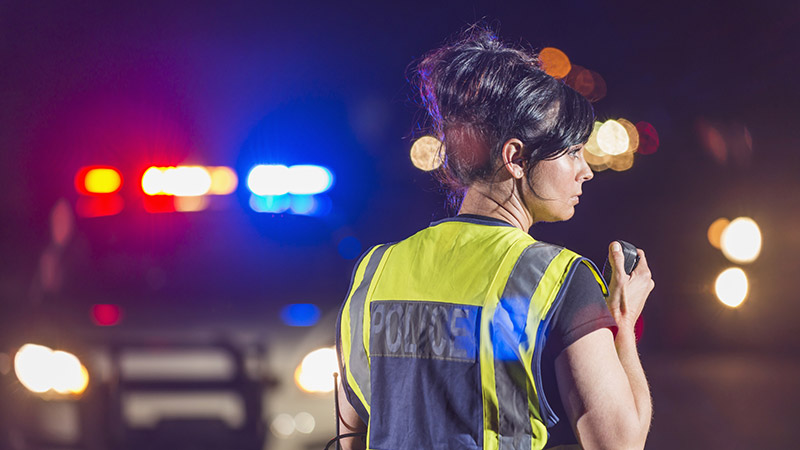
Disaster Communication
Communicating with family, friends, and loved ones after a major disaster is a high priority, as you try to determine their status and confirm that they are okay. However, disasters can make communication especially difficult, for several reasons: 1) There is physical damage to communications infrastructure, such as the telephone lines, fiber optics, or switches that facilitate communication, 2) The loss of electricity that keeps communication systems powered, or 3) So many people are trying to communicate at the same time that the communications infrastructure becomes oversaturated and cannot support additional users.
In each of these situations, your goal is to find a communication method that uses alternative pathways and minimizes bandwidth consumption.
Communication Options in a Disaster
-
Landline Phones: While it is sometimes difficult to find an actual landline phone in the age of internet and voice over internet protocol (VOIP) digital communication, an old-fashioned copper wire based landline phone is often very reliable in many types of disasters including floods and power outages. Landlines continue to operate, even during power outages, as they work off their own low voltage power system. When using a landline, your best bet is to have a wired (non-cordless) phone that does not require a wall plug or battery for power.
Calling your out-of-state contact will help to route around local phone lines which may be busy and overloaded. Also, when you pick up your landline phone, wait for a few minutes with the receiver off the hook even if you do not hear a dial tone right away. Available lines are assigned in the order they are requested, and it sometimes takes a moment for the system to connect and provide you with a dial tone, assuming the lines are still intact.
-
Text Messages: Cellular phone systems have proven to be more reliable than many wireline phone systems in certain disasters such as earthquakes, because there are fewer wire lines to fail. However, cell towers tend to suffer from over saturation of users during emergencies. Text messages are more likely to get through than voice calls, as they consume far less bandwidth on taxed cell phone infrastructure.
Be sure to keep a portable battery backup (power bank) and power cord available, as cell phone batteries will drain quickly with heavy use after a disaster. A car charger/adapter can also be very useful in a disaster, as your phone will run for days when powered from your car’s battery.
Remember that cell towers depend on electrical power and/or backup batteries and generators to remain functional. Residents in Christchurch, New Zealand were thrilled to have cell phone service in the hours after a major earthquake in 2011; however, as generators ran out of fuel the cell towers went offline.
- Email: Email can be a great way to send messages during a disaster if you have access to the internet. Text-based emails (no pictures) consume very little bandwidth, and popular email services like Yahoo or Gmail are cloud-based, which reduce the likelihood of a local email server failure that you might experience with a work-based email like Outlook.
- Social Media: Social media sites such as Facebook and Twitter are not only popular for day-to-day communication, but can be a great asset during a disaster to obtain information as well as share your status. Facebook even facilitates disaster communication and sharing of your status by a feature called Safety Check. Once activated by Facebook in a disaster-affected area, Safety Check allows you to check in with your status, allowing family and friends to see your confirmation that you are safe. While social media gets around some of the bandwidth issues faced by point-to-point communication methods such as landline phones, cell phones, and texting, it is dependent on having access to the internet and adequate bandwidth to get to social media websites.
- Two-way radios: Two-way radios provide extremely reliable communication when all other methods have failed, and form the backbone of disaster communication by public safety agencies. Most two-way radios work by communicating directly with other radios within range. This means their range is limited to a couple of miles in ideal conditions, or less if you are in a city with many buildings. If you can get to the top of a hill, your range may extend to line-of-sight, allowing you to communicate over many miles to any other radio as far as your eye can see. Inexpensive two-way radios that are often used recreationally, such as the Family Radio Service (FRS) and General Mobile Radio Service (GMRS) radios, can be purchased at most big box stores or online. While these radios do not require a license to purchase, the legal use of the higher transmission power on GMRS frequencies requires submitting the FCC license application and associated fee. If you chose to use an FRS/GMRS radio, be sure to use them before a disaster so you understand the controls and their limitations.
- Amateur or “Ham” Radio: Ham radios are a form of two-way radios and are capable of communicating from radio to radio, but also have expanded range using intermediate relay radio stations called “repeaters.” These repeaters are often located in strategic locations, such as tall buildings or mountain peaks. This allows a small hand-held ham radio to effectively communicate throughout an entire local region. Other ham radios use lower frequencies that bounce their signals off the atmosphere, allowing the transmission to go around the country or around the world. Using a ham radio requires a license, which is earned by demonstrating your understanding of radio communication physics, principles, and laws on an FCC test. Despite this requirement, ham radios are one the most reliable ways of communicating after a disaster!
Resources
- FCC/FEMA Tips for Communicating During an Emergency
- Create Your Family Emergency Communication Plan
- How to get an amateur (ham) radio license
